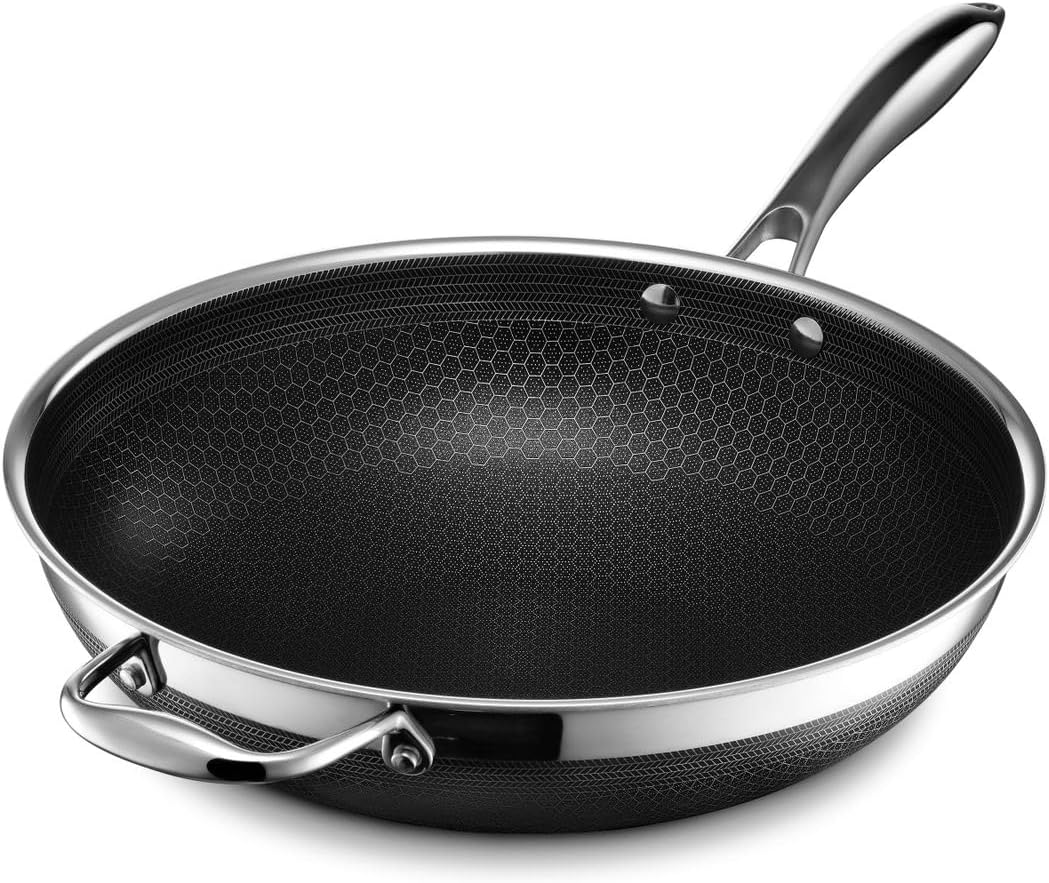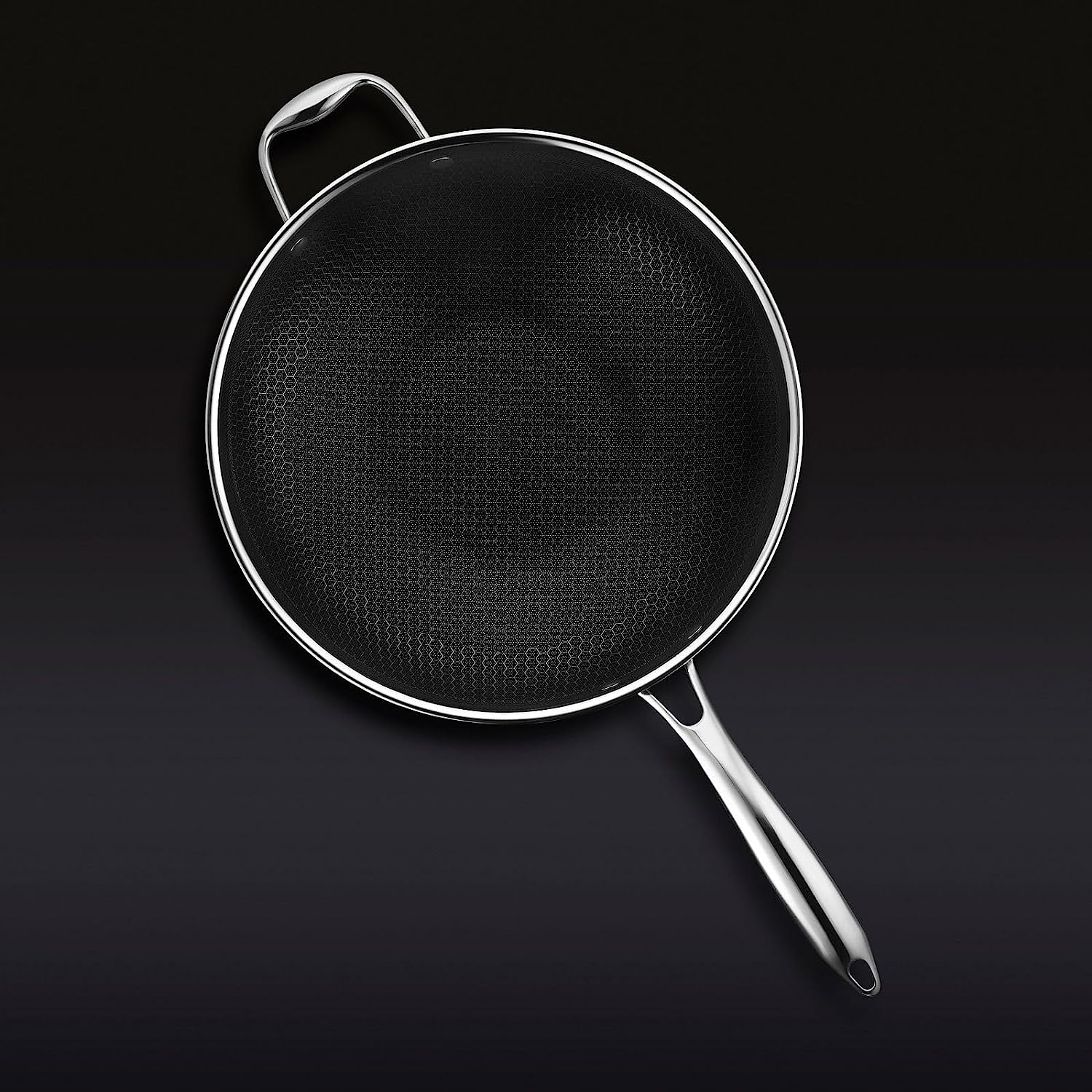
Choosing the proper cookware set may make or break your cooking experience. There are many alternatives on the market, but HexClad is gaining popularity. This comprehensive research will examine what makes HexClad cookware stand out from the competition and whether it is pricey.
What is HexClad Cookware?
A cutting-edge cookware manufacturer, HexClad offers a particular material and design combination. The cookware is suitable for cooking without additional oils or fats because of its ground-breaking hexagonal laser etching method. The tri-ply construction uses stainless steel on the interior, an aluminum core, and a magnetic stainless steel outer to achieve consistent heat distribution.
Advantages of HexClad Cookware
HexClad cookware has several advantages that appeal to both amateur and expert chefs. Here are some of the primary benefits:
- Exceptional Nonstick Properties: its hexagonal etching creates a durable and dependable nonstick surface, keeping food from sticking and making cleanup a snap.
- Versatility: This cookware is engineered to handle a variety of cooking procedures, including frying, sautéing, boiling, and searing.
- Even Heat Distribution: The tri-ply structure evenly distributes heat throughout the cooking surface, avoiding the possibility of hot spots and poorly cooked food.
- Durable Build: Longevity and resistance to warping are provided by the stainless steel interior and outside.
HexClad Pans: A Closer Look
Home cooks and chefs of all levels can choose from various Hexclad pans. These pans stand out thanks to their distinctive cooking surfaces, which feature hexagonal shapes. These pans come in different shapes and sizes to meet diverse culinary needs.
HexClad pans are available in various sizes, from small 8-inch pans for single servings to larger 12-inch pans for family feasts. Due to their sturdy construction and nonstick characteristics, they are suitable for a wide range of dishes.
HexClad Review: Pros and Cons
Like other cookware, HexClad has benefits and drawbacks. For you to make an informed choice, let’s investigate these:
Pros:
Excellent nonstick performance means no additional butter or oil is needed.
It is an excellent investment because it is solid and long-lasting.
Versatile and able to be used with many different cooking techniques.
Dishwasher safe for simple cleanup.
Cons:
It costs more than regular nonstick cookware.
The grips could be uncomfortable for some people to hold.
Although the drawbacks are pale compared to the advantages, it is crucial to consider your culinary preferences and budget.
Hexclad Review: All You Need to Know Before Buying One!
Comparing HexClad with Traditional Cookware
To properly appreciate the value of it, compare it to standard nonstick cookware. Traditional cookware has long been a reliable companion in the kitchen, faithfully serving us throughout the years. However, HexClad‘s groundbreaking design and advanced technology introduce a fresh perspective to
Traditional nonstick cookware often contains harmful chemicals, such as PFOA (perfluorooctanoic acid) and PTFE (polytetrafluoroethylene). These chemicals have the potential to be released into HexClad Wok, which is free of PFOA and PTFE, ensuring that your meals are safe and free of potential health risks.
HexClad vs. Other Nonstick Cookware Brands
Several companies make nonstick cookware than this one. Many other brands tout themselves as the best while marketing similar goods. But what sets it apart from its rivals is the unusual hexagonal laser-etching. Compared to conventional nonstick coatings, the hexagonal pattern increases food release and lessens scratching. This nonstick cookware achieves the ideal performance, durability, and safety balance compared to other nonstick cookware products.
HexClad Wok: Stir-Fry Like a Pro
A wok is a must-have for anyone who enjoys preparing Asian-inspired foods. This provides high-quality work that is both practical and fashionable. The result has the same unique hexagonal laser-etched shape as the skillet, ensuring equal heat distribution and excellent nonstick performance.
You may stir-fry your favorite veggies, meat, or noodles in this cookware with minimal oil, retaining the flavors and nutrients of your ingredients. Its outstanding heat retention and distribution make cooking a pleasure, and its sleek design adds a touch of refinement to your kitchen.
HexClad Costco Partnership
If you’re a Costco member, you’ve probably seen HexClad cookware on your shopping visits. It has collaborated with Costco to make its goods more accessible to customers. Costco frequently has exclusive bargains and discounts on its sets, making it an appealing alternative for anyone wishing to expand their cooking arsenal. The collaboration with Costco demonstrates its dedication to producing high-quality cookware at reasonable pricing.
Is HexClad Worth the Investment?
When considering quality cookware, the issue of whether it is worth the investment frequently arises. The higher price point of HexClad Wok may put some potential purchasers off. The cost becomes fairer when considering its improved performance, durability, and health-conscious design.
Remember that HexClad cookware is made to last, so consider it a long-term investment in your kitchen and culinary experience.
How to Clean and Maintain HexClad Cookware
To ensure that your HexClad cookware lasts longer, proper care and maintenance are crucial. While the cookware is safe in the dishwasher, we recommend handwashing it with mild soap and a soft sponge. This will help preserve its nonstick properties.
It’s best to avoid using metal utensils as they can potentially leave scratches on the surface. Opt for wooden or silicone utensils instead. Also, be cautious of exposing the cookware to high heat for long periods, as this can lead to discoloration.
Where to Buy HexClad Cookware
You can purchase This cookware from various online shops and specialist kitchen stores. Furthermore, as previously said, it is available at Costco, frequently with exclusive deals and bundles. To get the best value, compare prices and look for ongoing specials before purchasing.
Conclusion
Last but not least, HexClad cookware is a solid and distinctive choice for anybody looking to modernize their kitchen essentials. With its exceptional nonstick performance, even heat distribution, and robust construction, this provides a satisfying cooking experience.
Although the upfront cost is higher than conventional cookware, the quality and long-term advantages outweigh it. Whether you’re a seasoned chef or a novice home cook, the HexClad Wok is a stunning addition to any kitchen.
FAQs
Q1: Can HexClad be used on all types of cooktops?
A1: This suits gas, electric, ceramic, and induction cooktops.
Q2: Can I use hexclad pans in the oven?
A2: Without a doubt! You can use These pans in the oven at a specified temperature, usually approximately 500°F (260°C).
Q3: Is there a warranty offered by HexClad?
A3: It offers a limited lifetime warranty against material and craft faults on its cookware.
Q4: Can these pans be stored stacked?
A4: While HexClad cookware is built to last, it is best to avoid stacking it to avoid potential scratching of the nonstick surface.
Q5: Can I put it in the dishwasher?
A5: This dishwasher is safe, although we recommend handwashing to maintain the nonstick qualities.








